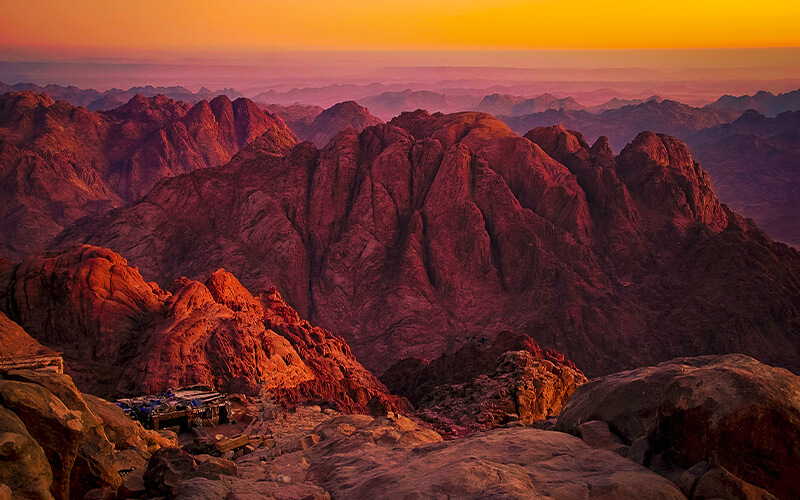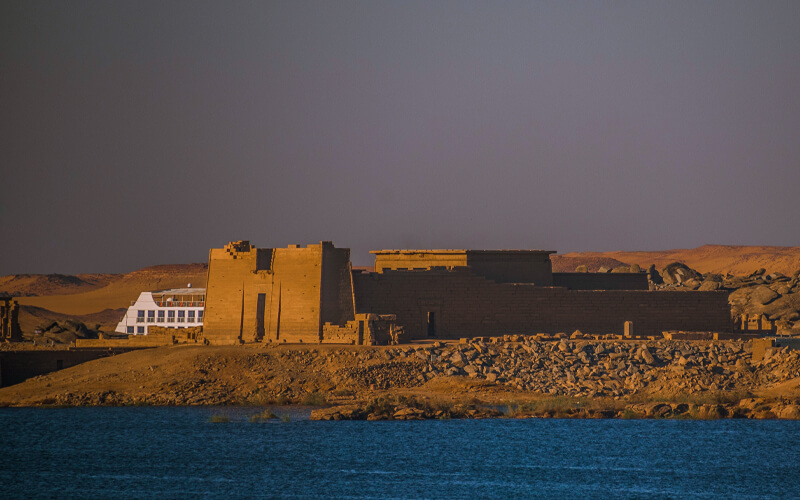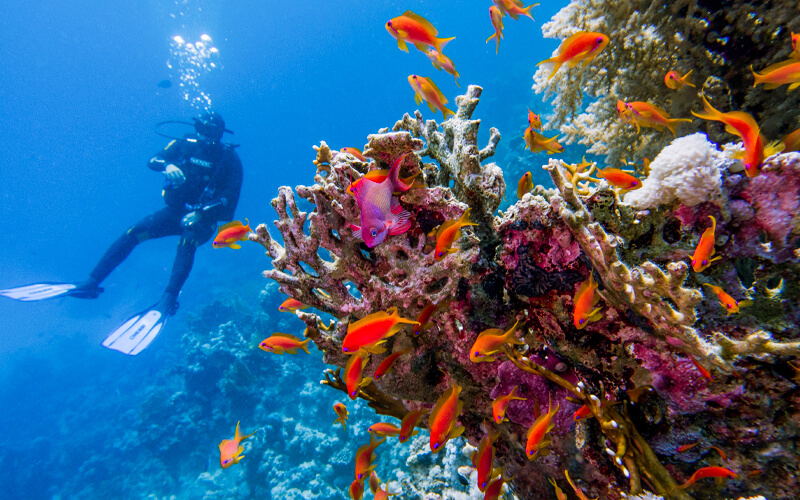Mount Sinai
Mountains in the Sinai Peninsula of Egypt are thought to be in the same position as the biblical Mount Sinai in Egypt. Mount Sinai is also known as Mount Moses and Jabal Mousa in Arabic. Mount Sinai is revered by Christians, Muslims, and Jews alike, who all believe that it was at the peak of the mountain that God spoke to Moses and gave him the Ten Commandments.
Two thousand years ago, in the center of the Sinai Peninsula’s red desert, Moses experienced the Holy Spirit on Mount Sinai in Egypt. Since then, the Abrahamic faiths have revered this location, making it a popular tourist destination.
If you’re looking to spend a fantastic vacation in Egypt check out our Egypt Excursions with our qualified Egyptologist with the best Egypt Travel Guide in Egypt.
What is the location of Mount Sinai in Egypt?
It is situated in the city of Saint Catherine, in the South Sinai governorate area, 278 kilometers away from the bustling metropolis of Cairo. It’s just across the street from Mount Catherine. Mount Sinai in Egypt offers a breathtaking view of St. Catherine Monastery, which was once a Greek Orthodox monastery and was established between 548 and 565, making it one of the world’s oldest monasteries.
Mount Sinai History:
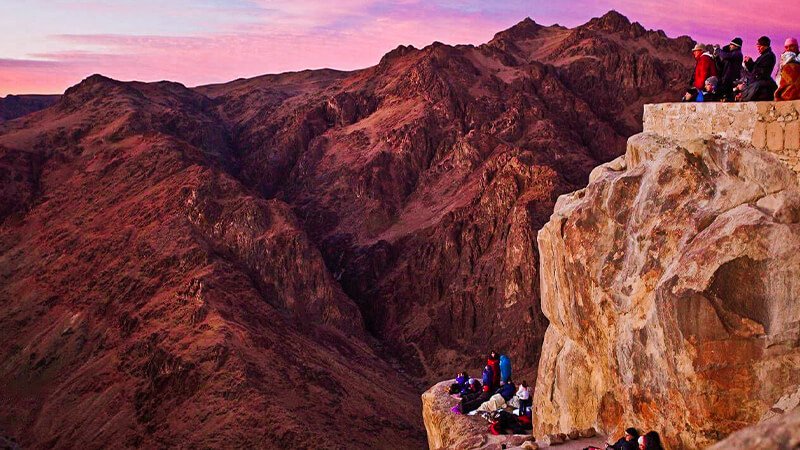
Sunrise from the top view of Mount Sinai in Egypt
Moses, the founder of Judaism, was born in the Egyptian capital of Cairo. “He was the son of a lowly Hebrew slave,” his father said. For approximately 400 years, from 1650 to 1250 BC, the Hebrews were held in servitude to the pharaohs and compelled to labor as slaves to support their families.
- The conclusion of this time was marked by the revelation of a prophecy by an Egyptian priest serving the Pharaoh, according to which a Hebrew child would be born to rescue the Hebrews from their enslavement.
- When the Pharaoh learned of this, he ordered that every male child born to Hebrew parents be slain by drawing a blood sacrifice. Moses’ father, to rescue his son, abandoned him in a basket on the banks of the Nile river, where he died.
- Having been discovered by the Pharaoh’s daughter, Moses was nurtured and adopted as a member of the royal family. The values and traditions of the Royal family guided Moses’ education, which included Esoteric studies and the magical traditions of the Egyptian mystery schools. As he grew older, Moses continued to follow these ideas and practices.
- With his fortieth birthday approaching, Moses found his Hebrew ancestors and was appalled by the way the Pharaohs were treating his people. Later, he assassinated an Egyptian supervisor before fleeing to exile in the Sinai Peninsula’s desolate desert.
- While grazing his flock on Mt Horeb for the following forty years, Moses transformed himself into a shepherd. He stumbled to a blazing shrub that had been engulfed by its flames in some way.
- After then, Moses came to Mt Horeb two more times to speak with God, according to the Holy Bible, which states: And the glory of the Lord dwelt upon Mount Sinai in Egypt, and the cloud covered it for six days, and on the seventh day God called unto Moses out of the midst o the cloud. Moreover, when it appeared on Mount Zion, the splendor of the Lord was like consuming fire in the eyes of the children of Israel, as they looked up at it. And Moses entered into the middle of the cloud and ascended onto the hill, where he remained for forty days and forty nights in the wilderness.
- In addition to receiving the Ten Commandments on Mount Sinai Egypt, Moses also got specific instructions on how to construct a portable box to house the Ten Commandments, which was named the Ark of Covenant and was fashioned of wood and gold, according to the Book of Exodus, during his stay there. Mt Sinai was their final destination, and Moses and his followers set out in pursuit of the Promised Land shortly after finishing the building of the Ark of Covenant.
Top Things to do in Mount Sinai in Egypt:
1- A day to Mount Sinai

Holy Mount Sinai in Egypt
Every year, tens of thousands of visitors go to Mt Sinai. With its picturesque surroundings and closeness to the Red Sea, visiting Mt. Sinai is commonly included in a combined trip to the Monastery of St Catherine, as well as for visitors vacationing in the adjacent districts of Dahab, Sharm El Sheikh, or even Egypt.
Accommodation is available in the little settlement of St Catherine if you choose to spend the night as near as possible to the foot of Mt. Sinai’s crater rim.
In the winter months, temperatures may drop to as low as -1 degrees Fahrenheit, so be prepared to be chilly if you plan to come between December and February. Camping at the summit of Mt Sinai is also an option, and it is highly suggested for those looking for an adventurous and soul-stirring experience in the Sinai Desert.
Don’t miss to check this article about the Best time to visit Egypt
2- Taking a Hike Up Mount Sinai
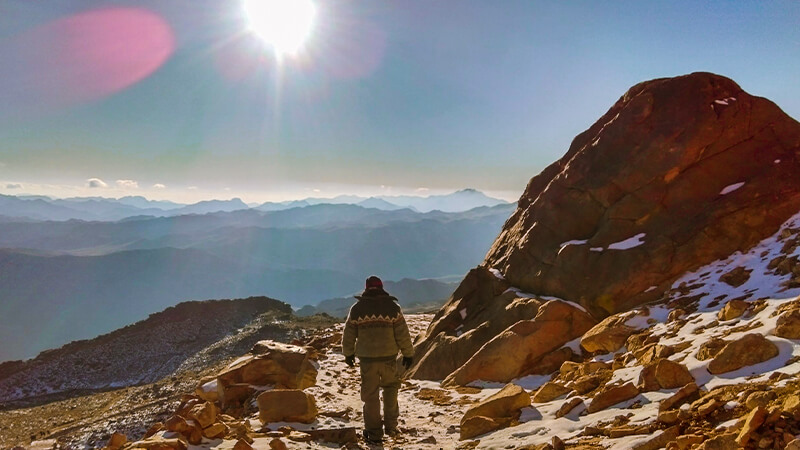
Hiking up in Mount Sinai Egypt
Climbing the mountain is a simple and enjoyable experience. It provides a glimpse of the majesty of southern Sinai’s high mountainous landscape. Climbing Mt. Sinai may be accomplished on foot, with the assistance of donkeys or camels from the surrounding area. The trek is spectacular, but it needs a considerable degree of fitness due to the elevation of Mt. Sinai, which is 2,285 meters above sea level.
The Camel Trail and the Steps of Repentance are the two well-defined routes that go to the top, and almost all hikers follow one of them. Both routes come together at Elijah’s Basin, a plateau approximately 300m below the top where they are joined by a bridge. All visitors must then climb a steep series of 750 rocky and uneven stairs to the summit, where there is a tiny chapel and a mosque; however, both the chapel and the mosque are locked. From there, everyone must descend a steep sequence of 750 rough and uneven steps to the bottom.
Both the ascent and the summit provide breathtaking views of the surrounding valleys and craggy mountain chains that stretch out into the horizon on either side of the peak. On a clear day, it is possible to glimpse Mount Catherine’s even higher top, which is called in Arabic Gebel Katarina.
3- The Camel Trail
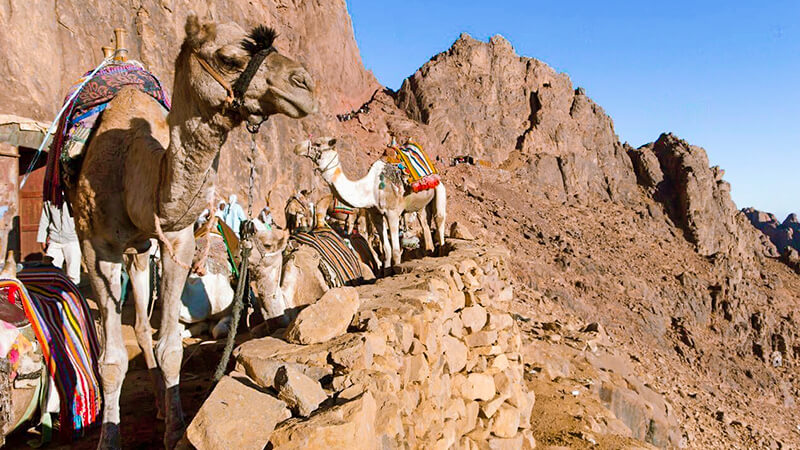
Camel trail in Mount Sinai in Egypt
This is the initial trial, and it is also the shortest and most direct approach to the top. It is possible to access the camel track by strolling along the northern wall of St Catherine’s Monastery, which runs beyond the end of the monastery courtyard. A steady pace is maintained throughout the ascent, which takes around two hours. The camel route is broad and clean, and it descends gently as it ascends a series of switchbacks to the top of the mountain.
Hikers often walk up, but it is also possible to rent a camel at the base, which is right beyond the monastery and ride it to Elijah’s Basin, where the camel track comes to a close. On the way up, there are several kiosks where you may stop for water, tea, coffee, or a snack to keep you going.
4- Steps of Repentance
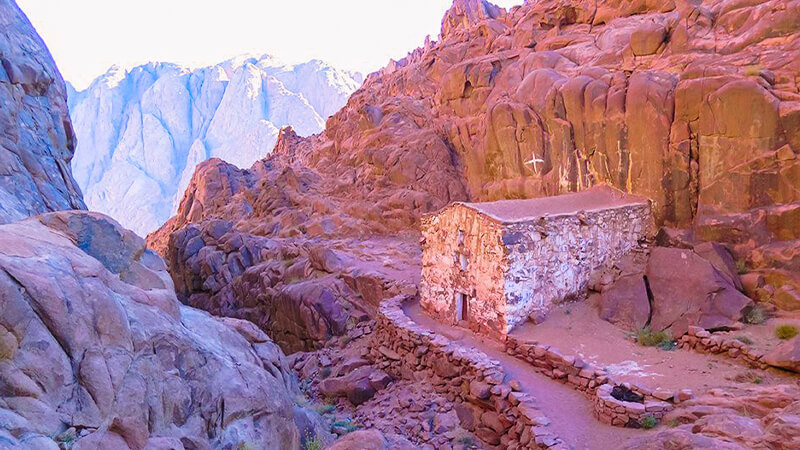
Steps of Repentance in Mount Sinai in Egypt
The alternate route to the peak from the monastery parking lot is the demanding 3750 Steps of Repentance, which takes around three hours. It starts just outside the monastery’s southern corner and winds its way around the grounds. As a kind of penance, a monk built the foundation for the stairs. The stairs – which consist of 3000 up to Elijah’s Basin and then the last 750 up to the top – are built of poorly hewn rock and are steep and irregular in many places, as is the terrain on the mountain. They need powerful knees as well as precision in the placement of your feet. The breathtaking mountain landscape along this route, on the other hand, makes the additional effort worthwhile, and the bottom portions of the trail provide spectacular views of the monastery. To experience both paths to the peak of Mount Sinai Egypt, it is preferable to take the camel track on the way up and the stairs on the way back down on the return journey.
5- Trail of Wadi Al Arbaeen
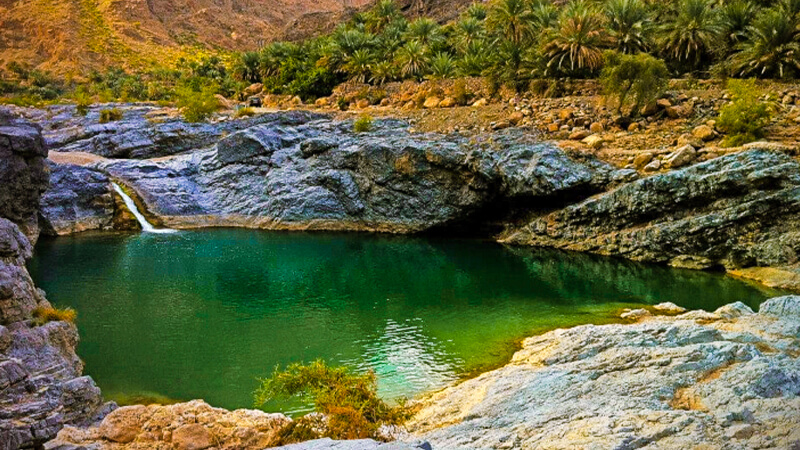
Wadi Al Arbaeen in Mount Sinai in Egypt
An alternate approach to the peak climbs up the adjoining mountain of Gebel Safsafa, which is more difficult to reach. You have the opportunity to pass by and see other historical places. Beginning in Wadi Al Arbain, behind Al Milga village, this trail passes by the 6th-century Monastery of Forty Martyrs, the Rock of Moses, which is believed to be the rock that miraculously produced drinking water after Moses struck it with his staff, and several hermit cells before reaching the end. Near Elijah’s Basin, the Wadi Al Arbain Route links to the main trail of Mount Sinai in Egypt, which is accessed through the Wadi Al Arbain Trail.
Through one of our Egypt vacation Packages, you may hike to the peak of Mount Sinai in Egypt and see the spectacular sunrise or sunset from the top of the mountain.

